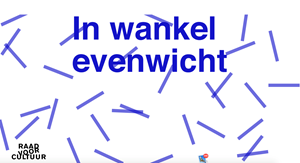
Every year, a report from the Dutch Council for the Arts is published. It details some of the sectors biggest flaws and gives some recommendations for future improvements. The report is well thought out and researched and includes opinions from a wide cross section of people throughout the sector.
Every year, a report from the Dutch Council for the Arts is published. It details some of the sectors biggest flaws and gives some recommendations for future improvements. The report is well thought out and researched and includes opinions from a wide cross section of people throughout the sector.
Having read through the report, it is interesting to note that the findings, both good and bad, are extremely familiar. They could probably be applied to any country or region in the museum world. It could almost be copied and pasted, which must indicate that we need to work together to solve some of the sector’s biggest areas for concern.
The Dutch Council for the Arts is presided over by Marijke van Hees and Jeroen Bartelse. The report had some positive findings. For a start, Dutch museums received more visitors in 2017 than in previous years. Secondly, the Dutch art collection was significantly enriched in 2017 by the inclusion of a number of works by Rembrandt including portraits of Marten and Oopien.
On the more flip side, the report flagged some areas of concern:
The council laid out several goals for cultural policy:

ArtDependence Magazine is an international magazine covering all spheres of contemporary art, as well as modern and classical art.
ArtDependence features the latest art news, highlighting interviews with today’s most influential artists, galleries, curators, collectors, fair directors and individuals at the axis of the arts.
The magazine also covers series of articles and reviews on critical art events, new publications and other foremost happenings in the art world.
If you would like to submit events or editorial content to ArtDependence Magazine, please feel free to reach the magazine via the contact page.